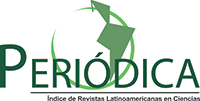Study of waterproofed concrete panels with silicate-based permeability reducing admixtures
DOI:
https://doi.org/10.21041/ra.v13i2.643Keywords:
crystalline admixtures, fissure, self-healing, waterproofing, concreteAbstract
This research studies the water absorption capacity of concrete panels and its self-healing process, using the incorporation of admixtures to the concrete or its application on the surface. Through permeability tests, water absorption by immersion and by capillarity, after the wet curing, the panels with crystalline admixtures applied superficially showed lower absorption capacity, followed by those without admixtures and those with the admixtures incorporated into the concrete, which showed greater absorption. Microscopy characterization was performed on the panels split in half, it was observed that the crystallization of the panels with superficial admixtures was more advanced compared to those with the incorporated admixtures. The induced fissures did not reach full pore filling after curing in both types of application.
Downloads
References
Araújo, M. D., Saviattoo, M. S. C. (2018), Estudo da influência de aditivo impermeabilizante em concreto. 83 f. Monografia (Especialização) - Curso de Engenharia Civil, Universidade do Sul de Santa Catarina, Palhoça. Disponível em: https://repositorio.animaeducacao.com.br/handle/ANIMA/4666
ASSOCIAÇÃO BRASILEIRA DE NORMAS TÉCNICAS. NBR 14.992: Argamassa à base de cimento Portland para rejuntamento de placas cerâmicas – Requisitos e métodos de ensaio. Rio de Janeiro, 2003.
ASSOCIAÇÃO BRASILEIRA DE NORMAS TÉCNICAS. NBR 16889: Concreto – Determinação da consistência pelo abatimento do tronco de cone. Rio de Janeiro, 2020.
ASSOCIAÇÃO BRASILEIRA DE NORMAS TÉCNICAS. NBR 9778: Argamassa e concreto endurecido – Determinação de absorção de água por imersão – Índice de vazios e massa específica. Rio de Janeiro, 1987.
ASSOCIAÇÃO BRASILEIRA DE NORMAS TÉCNICAS. NBR 15.575: Edificações habitacionais- Desempenho. Rio de Janeiro, 2013.
ASSOCIAÇÃO BRASILEIRA DE NORMAS TÉCNICAS. NBR 9574: Execução de impermeabilização. Rio de Janeiro, 2008.
ASSOCIAÇÃO BRASILEIRA DE NORMAS TÉCNICAS. NBR 9779: Argamassas e concreto endurecidos – Determinação da absorção de água por capilaridade. Rio de Janeiro, 1995.
ASSOCIAÇÃO BRASILERA DE NORMAS TÉCNICAS. NBR 6118: Projeto de estruturas de concreto – Procedimento. Rio de Janeiro, 2014.
ASSOCIAÇÃO BRASILERA DE NORMAS TÉCNICAS. NBR 7610: Concreto — Extração, preparo, ensaio e análise de testemunhos de estruturas de concreto. Rio de Janeiro, 2015.
Huang, H., Ye, G., Pel, L. (2016), New insights into autogenous self-healing in cement paste based on nuclear magnetic resonance (NMR) tests. Materials and Structures 49, no. 7, p. 2509-2524. DOI: https://doi.org/10.1617/s11527-015-0664-9
Marin, J. S., Brasil, K. F. (2016), Controle da retração plástica em lajes de cobertura de concreto armado. 67f. Trabalho de Conclusão de Curso (Bacharelado em Engenharia Civil) Universidade Tecnológica Federal do Paraná. Pato Branco, 2016. Disponível em: http://repositorio.utfpr.edu.br/jspui/handle/1/14309
Neville, A. M. (2016), Propriedades do concreto. 5 ed. Porto Alegre: Bookman.
Pazderka, J., Hajková, E. (2016), Crystalline admixtures and their effect on selected properties of concrete. Journal of Advanced Engineering. Praga, República Checa. DOI: https://doi.org/10.14311/AP.2016.56.0306
Takagi, E. M., Almeida, W. J., Oliveira, F. S. (2007), Tratamento químico cristalizante para impermeabilização e proteção de estrutura de concreto armado. In: CONGRESSO BRASILEIRO DO CONCRETO, 45, Florianópolis.
VEDACIT (2013), Manual técnico de impermeabilização de estruturas. 7ª edição. Disponível em: https://www.vedanews.com.br/uploads/biblioteca/manual-tecnico-impermeabilizacao-de-estruturas-7.pdf (acesso: 11 de julho de 2019).
Downloads
Published
How to Cite
Issue
Section
License
_______________________________
License in effect from September 2020
You are free to:
- Share — copy and redistribute the material in any medium or format for any purpose, even commercially.
- Adapt — remix, transform, and build upon the material for any purpose, even commercially.
- The licensor cannot revoke these freedoms as long as you follow the license terms.
Under the following terms:
- Attribution — You must give appropriate credit , provide a link to the license, and indicate if changes were made . You may do so in any reasonable manner, but not in any way that suggests the licensor endorses you or your use.
- No additional restrictions — You may not apply legal terms or technological measures that legally restrict others from doing anything the license permits.
Notices:
You do not have to comply with the license for elements of the material in the public domain or where your use is permitted by an applicable exception or limitation .
No warranties are given. The license may not give you all of the permissions necessary for your intended use. For example, other rights such as publicity, privacy, or moral rights may limit how you use the material.





















.png)














